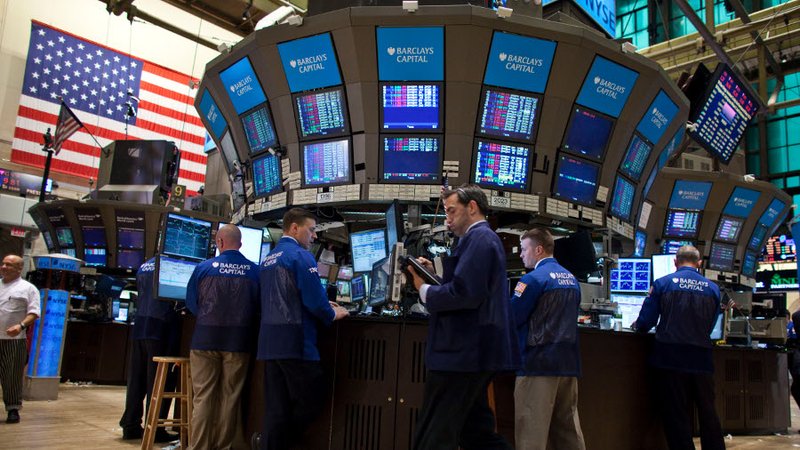
Stocks fell in choppy trade Tuesday after tech shares pulled back amid concerns trade tensions between the U.S. and China could increase.
The Dow Jones industrial average closed 171.58 points lower at 25,007.03. The 30-stock index climbed 197.79 points at its session high. Microsoft was among the worst-performing stocks on the Dow, falling 2.4 percent.
The S&P 500 declined 0.6 percent to 2.765.31 with tech falling 1.2 percent. Earlier in the session, tech rose as much as 0.9 percent. The tech-heavy Nasdaq composite dropped 1 percent to 7,511.01 and snapped a seven-day winning streak. Both S&P 500 and Nasdaq rose as much as 0.7 percent before trading lower.
Qualcomm was the worst-performing stock in the S&P 500, falling 5 percent. The stock fell after President Donald Trump shut down Broadcom’s proposed buyout of Qualcomm, citing concerns based on national security. Both companies have been ordered to abandon the deal immediately.
The VanEck Vectors Semiconductor ETF (SMH), which tracks semiconductor stocks, fell 1.4 percent after reaching an all-time high.
Earlier on Tuesday, Trump ousted Secretary of State Rex Tillerson. The Washington Post first reported that Tillerson was out before Trump confirmed it in a tweet.
“The worry is with the Tillerson ouster and Broadcom blockage from the Trump administration that this will add fuel to the fire in a battle versus China on the horizon over the coming 12 to 18 months,” said Dan Ives, head of technology research at GBH Insights, in a note.
“While most tech names including FANG stocks are relatively insulated from any China worries/headwinds, this is enough of a near term concern for tech investors to take some profits after a golden run over the last few weeks with many of these names making new highs,” Ives said.
Trump also said CIA Director Mike Pompeo would take over as secretary of state.

“It’s complete turnover at the White House and right on the precipice of these talks with North Korea,” said Jack Ablin, founding partner of Cresset Wealth. “Replacing him with the CIA director Pompeo, at face value I don’t think it means a ton to investors; it just underscores this turbulence going on inside the White House.”
Politico also reported that the Trump administration is targeting $30 billion in Chinese imports, but noted the president asked for a bigger number.
Stocks initially rose on the back of data that showed U.S. inflation remained tame.
The U.S. consumer price index rose 0.2 percent in February, in line with expectations. Inflation concerns permeated through the market last month as investors worried that higher inflation would lead the Federal Reserve to tighten monetary policy at a faster rate.
“Traders exhaled a sigh of relief, for combined with last week’s tepid wage growth data, nothing suggests that inflation has gotten to a point that forces the Fed to quicken its step down the path to normalization,” said Jeremy Klein, chief market strategist at FBN Securities.
“Nevertheless, the central bank will likely upgrade its near term outlook for the economy from ‘roughly balanced.'”
Stocks were coming off a mixed session in which the Nasdaq closed at a record while the Dow and S&P 500 fell amid trade-war worries.
Last week, Trump signed two declarations which would implement tariffs on steel and aluminum imports. The tariffs are expected to take effect in the coming weeks and will see a 25 percent charge placed on steel, and 10 percent levy on aluminum — Canada and Mexico however are exempt. Investors remain on edge over concerns that countries around the world may strike back because of the tariffs.
In corporate news, shares of General Electric fell 4.4 percent after analysts at J.P. Morgan cut their price target to $11 from $14.

